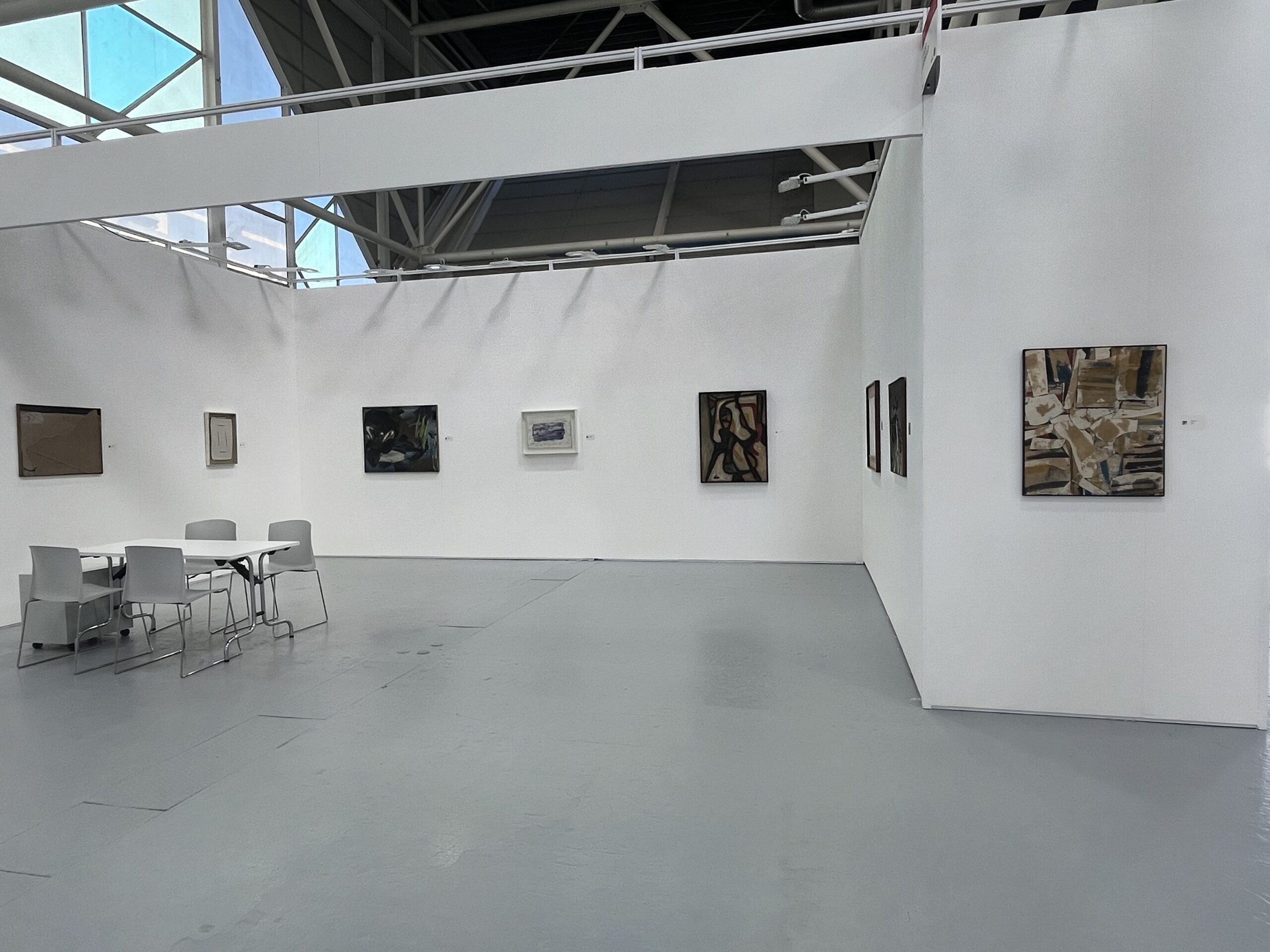Conrad Marca-Relli (Boston 1913 – Parma 2000) was an American painter. His artistic career was characterized by deep involvement in Abstract Expressionism, significantly contributing to the art scene of his time.
After World War II, Marca-Relli joined the “Downtown Group” in New York, a collective of artists who had their studios in lower Manhattan. This period, between the late 1940s and early 1950s, saw him immersed in the avant-garde art of Greenwich Village, distinguishing himself as a prominent figure in the movement. In 1949, along with Mark Rothko, Franz Kline, and Willem de Kooning, he founded the “Eight Street Club,” which promoted the first exhibition on American Abstract Expressionism. This exhibition, the Ninth Street Show, marked the beginning of the American art movement, emphasizing the importance of painterly gesture and Action Painting.
Marca-Relli is best known for his large monumental collages, where he combined oil painting and collage to create works characterized by intense colors, irregular surfaces, and expressionistic splashes. Over the years, he experimented with metallic and plastic materials, guiding his collages towards abstract simplicity, with rectangular shapes isolated on a neutral background.
A significant moment in his life and artistic production came in 1956 when he created one of his most famous works, “The Death of Jackson Pollock.” This work was conceived after Marca-Relli was called to identify the body of his friend Jackson Pollock, who tragically died in a car accident.
In addition to his artistic activity, Marca-Relli taught at prestigious institutions such as Yale University and the University of California at Berkeley. He received significant recognition, including a retrospective at the Whitney Museum of American Art in 1967.
His move to Parma in 1997, where he lived until his death in 2000, reflects his connection with Italy and his constant artistic pursuit.

Installation view, Arte Fiera Bologna 2024, courtesy Studio Gariboldi


